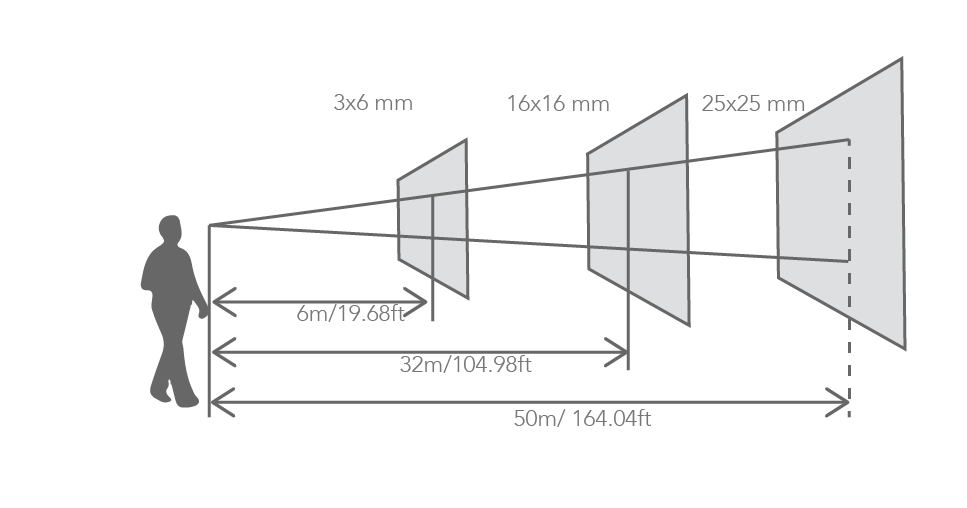The relationship between the viewing distance and the spacing of the LED display is known as the pixel pitch. Pixel pitch represents the spacing between each pixel (LED) on the display and is measured in millimeters.
The general rule is that the pixel pitch should be smaller for displays intended to be viewed from closer distances and larger for displays intended to be viewed from farther distances.
For example, if an LED display is intended to be viewed from a close distance (indoors or in applications like digital signage), a smaller pixel pitch, such as 1.9mm or below, may be suitable. This allows for a higher pixel density, resulting in a sharper and more detailed image when viewed up close.
On the other hand, if the LED display is intended to be viewed from a farther distance (outdoor large-format displays, billboards), a larger pixel pitch is preferred. This reduces the cost of the LED display system while maintaining acceptable image quality at the expected viewing distance. In such cases, pixel pitch ranging from 6mm to 20mm or even more might be used.
It's important to find a balance between viewing distance and pixel pitch to ensure optimal visual experience and cost-effectiveness for the specific application.
The relationship between viewing distance and LED display pitch is mainly determined by pixel density and resolution.
· Pixel density: Pixel density on LED displays refers to the number of pixels in a certain area, usually expressed in pixels per inch (PPI). The higher the pixel density, the denser the pixels on the screen and the clearer the images and text. The closer the viewing distance, the higher the pixel density required to guarantee the clarity of the display.
· Resolution: The resolution of an LED display refers to the total number of pixels on the screen, usually expressed as pixel width multiplied by pixel height (e.g. 1920x1080). Higher resolution means more pixels on the screen, which can display more detail and sharper images. The farther the viewing distance, the lower the resolution can also provide sufficient clarity.
Therefore, higher pixel density and resolution can provide better image quality when viewing distances are closer. At longer viewing distances, lower pixel densities and resolutions can often also provide satisfactory image results.
Post time: Jul-27-2023











